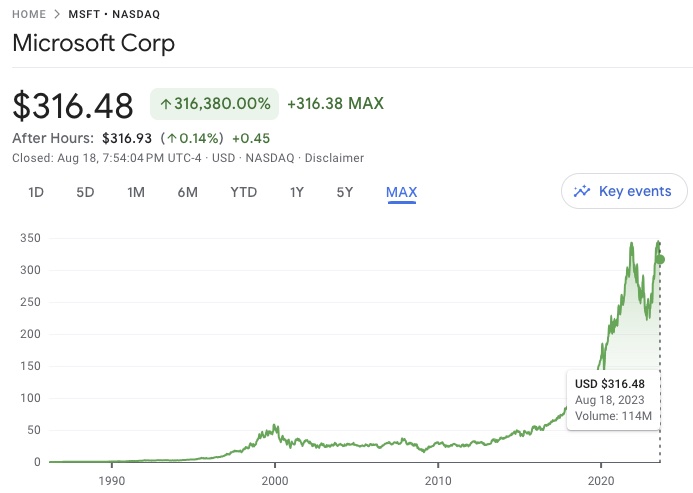MSFT offers an ESPP, in which employees can buy MSFT stock at a 10% discount.
There is a cap to the number of shares per employee per year in that one can
do at most 15% of one’s paycheck.
Selling the ESPP stock within the same year seems unwise because of short-term capital gains tax. That said, holding them increases exposure to MSFT (if MSFT does poorly, that affects one’s bonuses, and sometimes livelihood).
If the ESPP stock is in an IRA, then one can rebalance without incurring taxes. Is it possible to do this?
Qualified ESPPs must be approved by shareholders before implementation, grant all plan participants have equal rights, have offering periods not exceeding than 27 months, and have discounts not exceeding 15%. Non-qualified plans are more lax, but lack any kind of tax advantage.
The IRS limits ESPP purchases to $25,000 per calendar year.
Priority-wise, ESPP plans should be after funding an emergency fund with six months' living expenses, paying off high-interest debts, max contributions to 401 (k). Plan to divest ESPP shares periodically to reduce exposure to your company; more-so when your 401 (k) is also invested in your company. And, your employment is with the company.
ESPP can be used as a tool for front-loading tax-advantaged accounts: set max (15%) ESPP; increase paycheck deductions to tax-advantaged accounts; sell ESPP stock right after vesting; use ESPP stock proceeds for living expenses to offset wages going to tax-advantaged accounts.
Selling ESPP stock more than one year from the purchase date and more than two years from the data the offering period began has tax advantages - while the discount is reported as ordinary income, the remainder is classified as a long-term capital gain. This is referred to as a qualifying disposition. Otherwise, everything will be taxed at ordinary income rates, which are generally less favorable than capital gains rates. This is referred to as a disqualifying disposition.
The capital gains tax brackets are:
| 0% | 10% | 12% | 15% | 20% | 22% | 24% | 32% | 35% | 37% | |
|---|---|---|---|---|---|---|---|---|---|---|
| Short-Term CG | $11k | $44,725 | $95,375 | $182,100 | $231,250 | $578,125 | $578,125+ | |||
| Long-Term CG | $44,625 | $492,300 | $492,300+ |
. Federal income tax brackets match those of the short-term capital gains .
MSFT stock rose 191.96% from 2019 to 2023.

Waiting 2y for a capital gains tax rate seems reasonable, and unlikely to hurt.
Selling ESPP shares immediately locks in the discount no matter how the company stock moves. The proceeds can then be used to buy a more diversified ETF.
It’s easy to under/over-report taxes when filing ESPP sales. Income from the ESPP must be reported in the W-2. The 1099-B is reported to the IRS, but one needs to make adjustments on Form 8949 (with the help of the Supplemental Information form) to avoid overpaying taxes.
- Investment Club. 2023.
- Short-Term Capital Gains: Definition, Calculation, and Rates. Julia Kagan; Thomas Catalano; Vikki Velasquez. www.investopedia.com . Accessed Aug 19, 2023.
- 2022-2023 Tax Brackets and Federal Income Tax Rates - NerdWallet. Sabrina Parys; Tina Orem; Lei Han. www.nerdwallet.com . Accessed Aug 19, 2023.
- Microsoft Corp | Google Finance. g.co . Accessed Aug 19, 2023.
- Stock Plan Services | Employee Stock Purchase Plans | Fidelity. www.fidelity.com . Accessed Aug 19, 2023.
- Filing taxes for your employee stock purchase plan (qualified). workplaceservices.fidelity.com . Accessed Aug 19, 2023.
- Have an employee stock purchase plan? Beware the risks. www.cnbc.com . Oct 14, 2019. Accessed Aug 19, 2023.
- Introduction to Employee Stock Purchase Plans – ESPP. Mark Cussen; Colleen Ramos; Suzanne Kvilhaug. www.investopedia.com . Accessed Aug 19, 2023.
- When Should You Sell ESPP Shares? — Equity FTW. www.equityftw.com . Accessed Aug 19, 2023.
- Adobe's ESPP is the Best ESPP in Tech — Equity FTW. www.equityftw.com . Accessed Aug 19, 2023.
MSFT gives a 10% discount on the closing fair market value of MSFT stock on the last business day of the 3-month offering period. There is no look-back provision. How much better is it at other companies?
Adobe has a 24-month offering period, and offers a 15% discount. The offering period can be reset too, e.g., if the price at the end of a purchase period is less than the offering period, Adobe automatically re-enrolls the employee in a new 24-month offering period going forward, allowing the employee to use that lower price. From 7/2/2018 to 6/3/2023, Adobe’s ESPP had an 83.06% gain. The 24-month offering period is crucial to performance especially when the company’s stock increases over time.